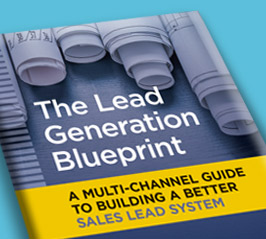
Pay-Per-Click (PPC) Campaigns
Summary
Google and Facebook aren’t the only players in the online advertising, but they are largest – by a mile. We have on occasion placed ads on other platforms, but the vast majority of our advertising is with Google and Facebook.
Online advertising is largely (although entirely) run with pay-per-click (PPC) campaigns using Google and Facebook. Which platform and which type of ads your run will depend on your product or service, your goals and your budget.
Google Search Ads
This is by far the largest of Google’s many marketing and advertising services. Google Search is the new Yellow Pages.
When anyone searches for a company, a product or a service, the first thing they do is go to Google and type in a keyword or keyword phrase. Google then produces its search engine page with a selection of website listings that best respond to the keyword query. Much of this page is made up of organic listings which reflects Google preferences for that query. But at the top of the page (and sometimes the bottom too), there are paid listings.
Click costs. Click cost vary widely from one industry to another. From as little as $1 or less up to $50 or more per click. These costs vary because of the competition and the willingness of some advertisers to bid high for certain keywords.. Imagine how much a lawyer is willing to pay for a click that may lead to a multi-million personal injury case.
Lead costs. Keep in mind too that a click is not a lead. A click is an anonymous person who will be visiting your landing page or website. And they will remain anonymous unless they fill out your form or call you. Conversion rates of clicks-to-leads are often just 5-10% – and sometimes lower. So do the math to figure out how much it will cost you to generate a lead.
Campaign structure. The Google Search platform is open to anyone, but be aware, it is a fairly complex platform with little support help from Google. But the platform aside, it’s important to structure your campaigns in a logical way. Each campaign has its own budget and location targeting. Each ad group within a campaign may target different audience profiles with different keywords. Each advertising message with an ad group can be adjusted to each audience separately.
Landing pages. And don’t forget your landing pages. When a searcher clicks on your ad, you want to take them to a dedicated page that continues the messaging from your original ad and has a clear cut Call-to-Action.
Quality Score. Google will continually monitor your ads and landing pages to be sure that you are delivering what you promised and what is expected from a particular keyword phrase. This will all contribute to what is known as your Quality Score. If you have a high Quality Score, you may actually show higher in the ad competition than someone who bids higher than you.
Text ads only. Google Search ads are all text-based ads with no images, logos or other formatting. It’s only words but different words (in your headline and text) can resonate differently with different people – so it’s important to test.
Location targeting. Audience targeting is based on keywords and locations. For location, you can target specific countries, states, metropolitan areas, counties right down to your local community. Or you can target an area covered by a specific distance from your business.
Budget. In terms of budget, you can set your daily budget for any amount you want. Just understand that your cost per click is dependent upon the market place so you need enough money in your budget to cover at least one click. You might start your budget at $10-$20 per day, but, again depending on your market, you may need to move up to $30-$50 a day to get any traction. The daily budget, by the way, may fluctuate from day to day, but Google will be use to balance out your budget for a 30-day period.
Google Display Ads
Google Display Ads gives you the power to place your advertising on websites, blogs and news sites anywhere you want. Using the Google Display Network, you can target your audience by demographics, behavior and location.
Google Display Ads are image ads, graphically designed ads (unlike the text ads of Google Search). Ads can be run on a pay-per-click basis (much cheaper than Google Search) or on a cost per thousand “viewable impressions” basis.
While Google Display will generate clicks for you, the conversion of those clicks into leads (completed forms) can be frustrating. It is best to view your Google Display ads as a brand-building exercise.
Facebook Ads
Facebook Ads have become the platform of choice for many advertisers in recent years.
One reason is its ability to target its community (Facebook users) based on their behavior on the platform. Facebook knows a lot about its users and it has leveraged that knowledge to sell advertising. Facebook Ads also run on a pay-per-click basis. The cost is usually less the Google Search and more than Google Display.
One of the advantages of Facebook Ads is that the users are more engaged on the platform. They are already posting and sharing with their friends. And your ads will appear right inside the same news feed that using to communicate with their friends.
To get started with Facebook Ads, you will need to set up a Facebook Business Manager account (or a Facebook Ads Manager account) and link it to your Facebook Business Page. Your Business Manager account is your central headquarters for all of your Facebook Ad activity – including billing and access to your Facebook tracking pixel.
If you are using other people to help you with your Facebook ads, you can add users to the account.
Retargeting Ads
Retargeting Ads allow you to serve your ads to people who have previously been on your website. Retargeting is available through both Google and Facebook. You can run Retargeting ads based on any visitor to the website or on any visitor to a specific page on the website.
Retargeting strategies can vary. One strategy might use Retargeting to simply try one more time to bring the past visitor back to the website with the same offer or Call-to-Action. Others might want to try a different offer or Call-to-Action with the understanding a different approach might have more success in converting them. Both strategies, in our view, make sense.
Landing Pages
Many online advertisers create their ads and link them to their website – usually the home page. As a rule, this should be discouraged because your home page is more of a business overview page, not a dedicated page to your promotion. That’s why we recommend using dedicated landing pages so when someone clicks on your ad, they will be taken to a page that is focused on the original promotion with no distractions.
Landing pages can be created on your own website (generally part of the navigation though) or through a third-party service.
While sending people to your home page is generally not advised, we have on occasion done this if the home page can be structured for lead capture – with an obvious Call-to-Action and an associated form. It’s not the best solution but it’s easier and sometimes more practical.
Schedule a Call
If any of the services described above interest you, we invite you to click here to schedule an introductory phone call or Zoom meeting.


